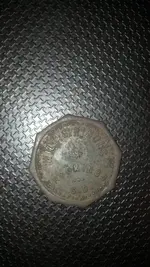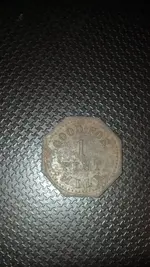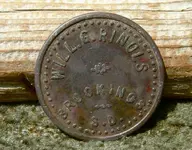CV & Surf--nice tokens! But, they stir up a dilemma... Miedema's SD Tokens book (at least the fairly outdated edition I have) and
TokenCatalog.com both list these as WILL GRINOLS. Obviously neither reference has actually seen the tokens, and my first thought was that neither listing questioned the name as there is a long-time and well-known token dealer in Minneapolis named Grinolds. So, to set the record straight, would you be willing to post your pics on the token website for the good of the hobby?
The next part of the dilemma comes when I search for tracks on Rinols. The 1900 Census for Sterling township, Brookings County, SD shows Will Grinols as a farmer. The 1910 Census for Aurora township, Brookings County, SD shows Willis J. Grinols as a farmer. Other records show that his name was Willis Jay Grinols. So, the token order got messed up and incorrectly showed his name - not a terribly unusual happening.
As to a date, I'd guess this at 1910 give or take about 8 years. He was born in PA in 1866 and died in MN in 1944. The 1920 Census shows that he had moved to Pine River, MN by that time.
How were these token used? The general method was that dairy farmers would establish a route of customers in a nearby town, making deliveries early in the morning hours when the milk could be kept cool until the customer retrieved the bottles from the doorstep and put them into the ice box. There were various schemes to tell the milkman how many bottles of milk to leave each day, but one common method was to leave tokens in the empty bottles which were set out the night before. A 1-pint token gets a pint of milk, etc. The tokens were purchased in advance from the milkman or at a "virtual office" established somewhere in the town. For instance, if the cousin of the farmer was a pharmacist in town, the tokens might be purchased at the drug store. And, why tokens? They solved at least three problems. First, the farmer was paid in advance, so there was no worry about collecting. Second, the customer didn't have to rummage around the house looking for nickels and dimes on the night when the empty bottles were to be set out. And, third, and maybe the most important, was the fact that in locations where coins were used instead of tokens, neighborhood boys found that they could supplement their income by making nighttime tours of the town removing cash from bottles on people's porches. The use of tokens put a stop to that type of activity.
Finally, here's a picture of Willis Jay Grinols from his family genealogy.
John in the Great 208










